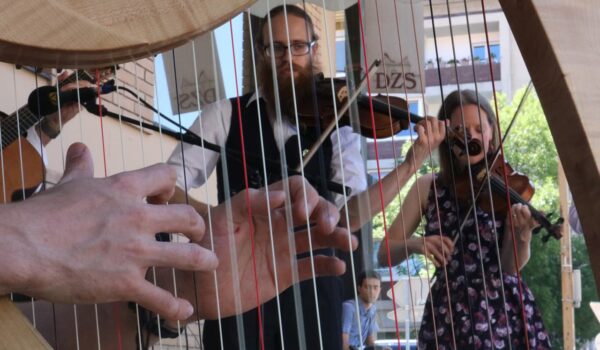Irish folk music rightfully enjoys the status of one of the oldest musical cultures on our planet. It is multifaceted and diverse, but thanks to its sing-songy, uncomplicated melodies combined with a complex, demanding rhythmic pattern, it is unmistakably recognizable from the first bars in all corners of the globe. As for the Irish themselves, music is perhaps their main national treasure, and they are very proud of the fact that they have managed to carry Celtic musical traditions through the centuries, carefully preserving them to this day.
An excursion into history
The art of composing poetry and songs originated in Ireland before the adoption of Christianity. The first singers and poets were called phyllids by the ancient Irish and attributed to them the magical power of influencing a person and his or her fate. In the Middle Ages, the musical and poetic traditions of the Philides were picked up by bards who traveled around Europe with their songs and ballads, accompanying themselves mainly on the harp. These traditions were further developed in the work of the blind harpist Thor O’ Carolan, the most famous and talented musician in Ireland who lived at the turn of the 17th and 18th centuries. He is the author of about 200 pieces of music. Many of them have survived to this day, and today they can be heard performed by modern harpists.
Together with O’ Carolan, the era of the harp, the main instrument of court bards and minstrels, ended in Irish music. At the end of the 17th century, it was replaced by the bagpipes and the violin, which were integral companions of the life of ordinary people on weekdays and holidays. Ancient Celtic ballads are gradually replaced by songs about life and everyday work, and they are sung not by wandering singers, but by ordinary residents of towns and villages. This is how the famous Irish folk is born.
It is played not only on violins and bagpipes. Gradually, flutes, banjos, and boyrans, heavy tambourines made of goatskin, came into use. Thanks to the sailors, the accordion and guitar were brought to the Emerald Isle and quickly fell in love with the local population. They enjoyed dancing folk dances such as the reel and the jig.
In the early 19th century, the music of ordinary people leaving their villages in search of work made its way to the big cities. A new song genre, the urban ballad, was born, and many folk songs were translated from Irish into English. This explains the presence of countless variants of the same song in the Irish folk music space.
The interest in Celtic folk all over the world flared up in the mid-60s of the last century. At that time, professional music bands began to form en masse in Ireland, performing on small stages of city clubs and pubs. They performed music of various styles and genres, focusing mainly on its popularity among the public. But there were also musicians who came up with the idea to turn to folk music in their work, in other words, to play good old Irish folk in a modern way. The young composer Sean O’ Riad was among the latter. In 1963, under his leadership, the band Chieftains was formed, whose work determined the modern path of development of Celtic folk. During its long creative life, the band has recorded 24 albums, each of which, despite the active use of folk melodies, still sounds fresh and modern today.
The Dubliners were the second band to turn to national musical traditions, and their lead singer Luke Kelly was distinguished by his sincerity and heartfelt performance. This is largely responsible for the band’s success in their native Ireland and on the world stage.
Interesting facts
- In 1601, the English authorities outlawed bagpipers, and bagpipes began to be massively destroyed. Then musicians began to use whistles made of corn cobs. This instrument has survived to this day.
- Ireland is the leader in the number of victories in the international song contest Eurovision. Since 1965, the residents of the Emerald Isle have won the contest seven times, including 3 times in a row.
- Ireland is the only country with a musical instrument as one of its national symbols. It is the harp. In the Middle Ages, the harp appeared on the coat of arms and the national flag of Ireland. For several centuries, the image of the harp has been minted on coins. And even one of the main attractions of Dublin, the Samuel Beckett Bridge over the River Liffey, is designed in the form of a harp.
- In Japan, one can come across the statement that Irish music is healing, it heals the soul.
- The Emerald Isle is famous for its large number of music festivals, many of which have international status. Among the most popular are the annual Temple Bar Trad festival of Irish music and culture, the Dublin Dance Festival, the Jazz Festival, and the Rose of Tralee Festival of National Music, which is open to representatives of the Irish diaspora from all over the world.
